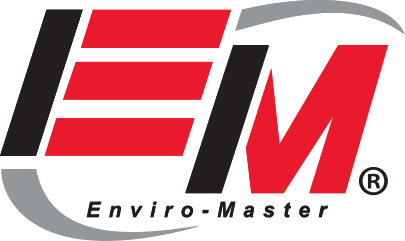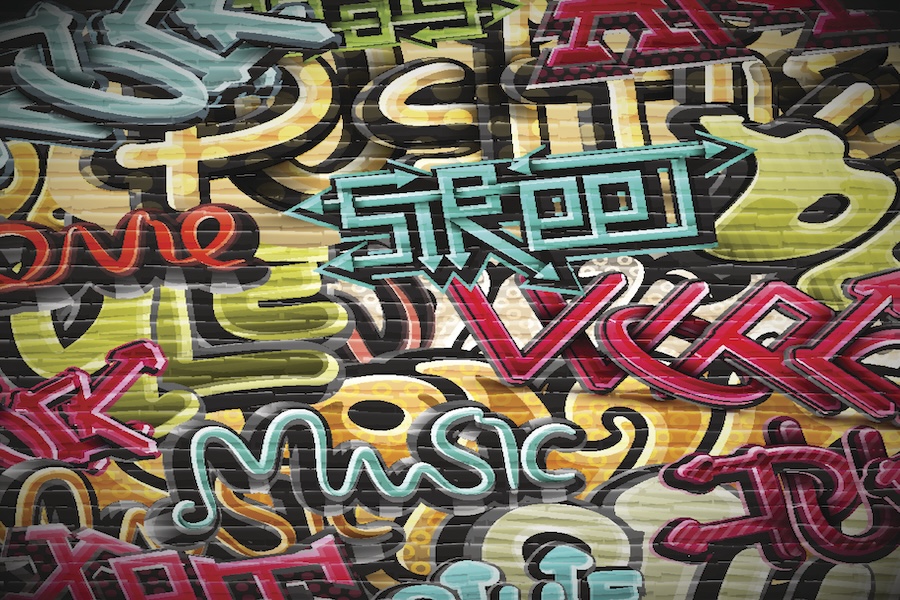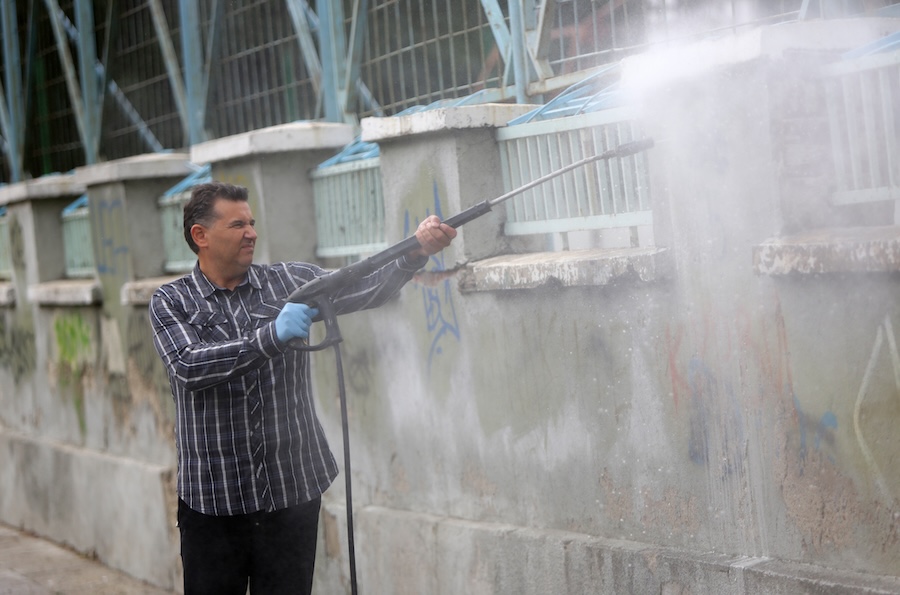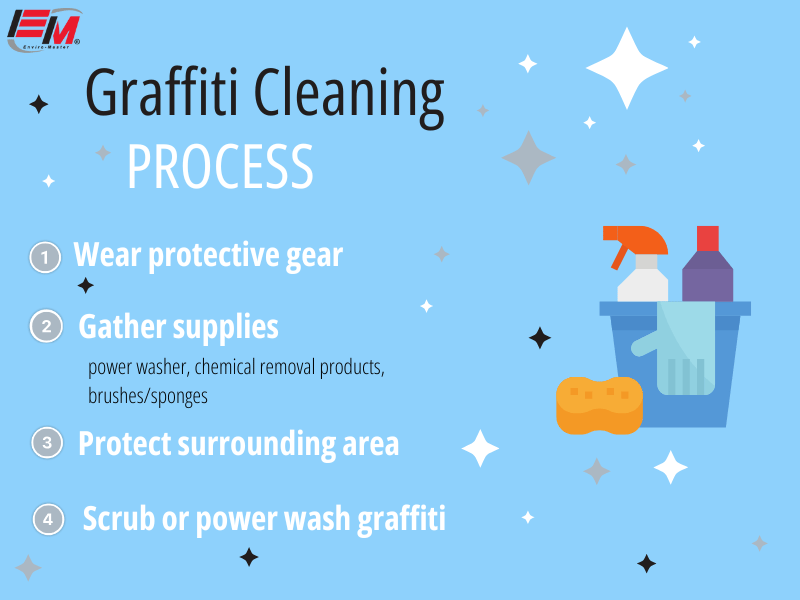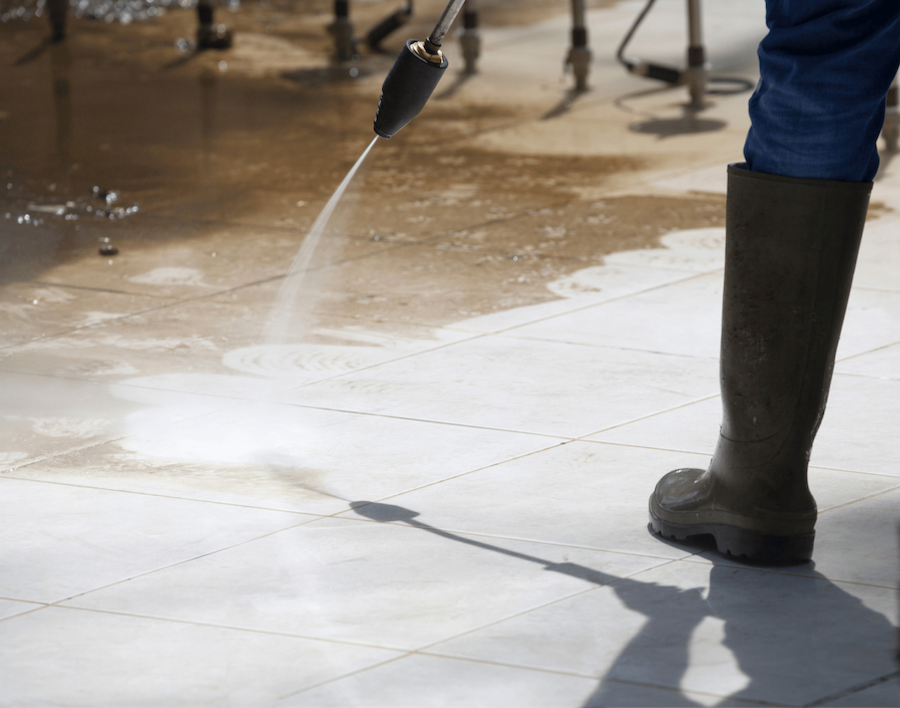To clean off graffiti, start by identifying the surface type (e.g., brick, metal, glass, or painted) to choose the right removal method. Use a graffiti removal product or chemical like mineral spirits, applying it with a scrubber or sponge and allowing adequate dwell time. For tougher surfaces like concrete or brick, pressure washing with hot water can effectively remove spray paint and other graffiti. Always test your chosen method on a small area first, and if removal proves difficult, consider contacting professional cleaning services.
Understanding the Surface and Type of Graffiti
When it comes to graffiti removal, understanding the surface type is crucial for choosing the right removal techniques and products. Each surface presents unique challenges, requiring specific methods to ensure effective cleaning without causing further damage. Here’s a breakdown of common surface types and how to address their cleaning needs:
Concrete, Brick, and Stone (Masonry Surfaces)
Masonry surfaces, are porous and uneven, making graffiti paint and spray paint graffiti more challenging to clean.
Issues:
- The porous nature of these surfaces allows graffiti to seep into the material, creating stubborn graffiti shadows that persist even after cleaning.
Solutions:
- Use a graffiti removal product designed for porous surfaces, ensuring sufficient dwell time to break down the graffiti.
- Pressure washing or power washing with hot water is often effective
Metal Surfaces
Metal surfaces, such as fences, fuel tanks, and utility boxes, are smooth and non-porous, making graffiti easier to remove compared to masonry surfaces.
Issues:
- Graffiti tags created with permanent markers or spray paint may leave residue or stains, especially on untreated metal.
- Excessive scrubbing or harsh chemicals can scratch the surface or damage protective finishes.
Solutions:
- Start with mild cleaners, such as warm water mixed with a gentle cleaning agent, before using stronger options like mineral spirits or graffiti removers.
- For tougher graffiti vandalism, use white spirit or a paint remover, being cautious to preserve the metal’s top layer.
Glass Surfaces
Glass surfaces, including windows, are relatively easy to clean but can be scratched during the removal process.
Issues:
- Scratches from aggressive scraping tools or abrasive cleaners can permanently mar the surface.
- Graffiti spray paint and permanent marker stains may require multiple cleaning attempts.
Solutions:
- Use a graffiti removal product specifically formulated for glass to dissolve graffiti without harming the surface.
- For small areas, a razor blade scraper can be used gently to lift paint, but only with sufficient lubrication (e.g., warm water or a cleaning agent) to avoid scratches.
- Finish with a glass cleaner to restore the surface’s clarity.
Painted Surfaces
Painted surfaces, whether walls or other structures pose the risk of losing the original paint during graffiti removal.
Issues:
- Aggressive chemicals or scrubbing can strip the original paint along with the graffiti.
- Porous painted surfaces may absorb graffiti paint, making removal more difficult.
Solutions:
- Test removal products on a small area to ensure they don’t harm the original paint.
- For heavily damaged areas, repainting may be the most practical solution after cleaning off unwanted graffiti.
Removal Methods and Products
Getting rid of unwanted graffiti doesn’t have to be overwhelming, but choosing the right removal method is key. Depending on the type of graffiti and the surface it’s on, you’ll need to consider chemical or mechanical methods.
Mechanical Methods
For surfaces that can handle a little more force, mechanical removal methods can save you time and effort.
Power Washing: This is one of the most effective ways to clean graffiti off porous surfaces like concrete, brick, and stone. The high-pressure water blasts away graffiti paint, even on uneven surfaces, without relying on chemicals. It’s especially effective for large areas where using a chemical remover would take too long.
Tips for Power Washing:
- Use hot water to loosen stubborn graffiti spray paint.
- Start with a lower pressure setting to avoid damaging the surface and work your way up if needed.
- Be mindful of the surrounding area to prevent water or paint runoff from causing a mess.
Chemical Removal Methods
Sometimes, the best way to clean graffiti is with the right chemical solution. These products are designed to break down graffiti paint, spray paint, or even stubborn marks from permanent markers.
Graffiti Removal Products: These are specially formulated to tackle graffiti vandalism without damaging the surface underneath. They’re great for most surfaces, including metal and glass. Look for options that are surface-specific, like those made for brick or concrete.
Mineral Spirits and White Spirit: These are good for smaller areas where graffiti spray paint hasn’t penetrated deeply. They dissolve the paint, making it easier to wipe away. Use rubber gloves and safety glasses when handling these chemicals.
Paint Removers: If the graffiti has seeped into a porous surface, a paint remover might be necessary. These are stronger and work well on masonry surfaces like brick and concrete. Be cautious of dwell time to avoid damaging the top layer.
Hot Water and Cleaning Agents: For less intense graffiti, a mix of hot water and a gentle cleaner can sometimes do the trick. This method is perfect for glass and painted surfaces where you want to preserve the original paint.
Scraping and Sanding: For small areas or delicate surfaces, tools like scrapers or sanding blocks can work well. These methods require patience but are useful when dealing with graffiti tags on painted surfaces or masonry. Always test a small section first to ensure you’re not causing more harm than good.
The Graffiti Removal Process
Removing graffiti might feel like a big job, but with a little preparation and the right tools, you can tackle it effectively. Here’s a step-by-step guide to ensure you clean graffiti safely and successfully.
1. Safety First
Before you dive in, protect yourself. Graffiti removal products and techniques can involve strong chemicals and high-pressure equipment, so wearing the right gear is essential.
What to wear:
- Rubber gloves to protect your hands from harsh chemicals.
- Safety glasses to shield your eyes from splashes or debris.
- If you’re using strong cleaners or power washing, consider a mask to avoid inhaling fumes or particles.
2. Gather Your Supplies
Having the right tools on hand can make the job easier. Depending on the method you choose, here’s what you’ll need:
- Mechanical tools: a pressure washer for tough surfaces like brick, stone, or concrete.
- Chemical removers: graffiti removal products, mineral spirits, white spirits, or paint removers.
- Cleaning tools: sponges, scrubbing pads, magic erasers, or soft brushes for delicate surfaces.
3. Protect the Surrounding Area
To avoid any accidental damage, take a few minutes to protect the area around the graffiti.
- Cover unaffected surfaces with plastic sheeting or drop cloths.
- Pay special attention to nearby windows, landscaping, or painted surfaces that could be splashed with chemicals or water during the cleaning process.
4. Test First
Before going all in, it’s smart to test your chosen method on a small, inconspicuous area.
- This step ensures the product or technique won’t damage the top layer of the surface.
- It’s particularly important for delicate or painted surfaces, where a strong remover might strip more than just the graffiti.
5. Scrub or Wash Away the Graffiti
Now it’s time to roll up your sleeves and get to work:
Mechanical Methods:
- For power washing, adjust the pressure settings to suit the surface type. Start with lower pressure and increase if needed.
- Use hot water for more effective removal, especially on spray paint graffiti.
Chemical Methods:
- Apply the graffiti removal product or chemical of choice to the graffiti.
- Allow the product to sit for the recommended dwell time.
- Use a scrubber, sponge, or brush to gently scrub the surface, following the grain of porous materials if applicable.
6. When to Call in the Professionals
Sometimes, despite your best efforts, graffiti can be too stubborn or the surface too sensitive to handle on your own.
If the graffiti removal process becomes difficult or you’re worried about causing damage, it’s worth contacting a professional graffiti removal company. Professionals have the expertise and specialized equipment to handle tough jobs and ensure your property is restored without harm.
Why Enviro-Master is Your Go-To for Graffiti Removal
When graffiti strikes your property, Enviro-Master is here to help. Our specialized cleaning services are designed to restore your business’s appearance by tackling unwanted graffiti quickly and effectively. From brick walls to metal surfaces, we have the expertise and tools to remove spray paint, permanent markers, and other graffiti tags without damaging your property.
We know that graffiti can impact how customers view your business, so we focus on delivering fast, reliable results. Whether it’s your storefront, parking lot, or surrounding area, our team uses industry-grade graffiti removal products and methods like power washing to clean porous surfaces and protect the original finish. Contact us today to reclaim your space!
Resources:
https://www.thespruce.com/mineral-spirits-vs-paint-thinner-difference-4764584
